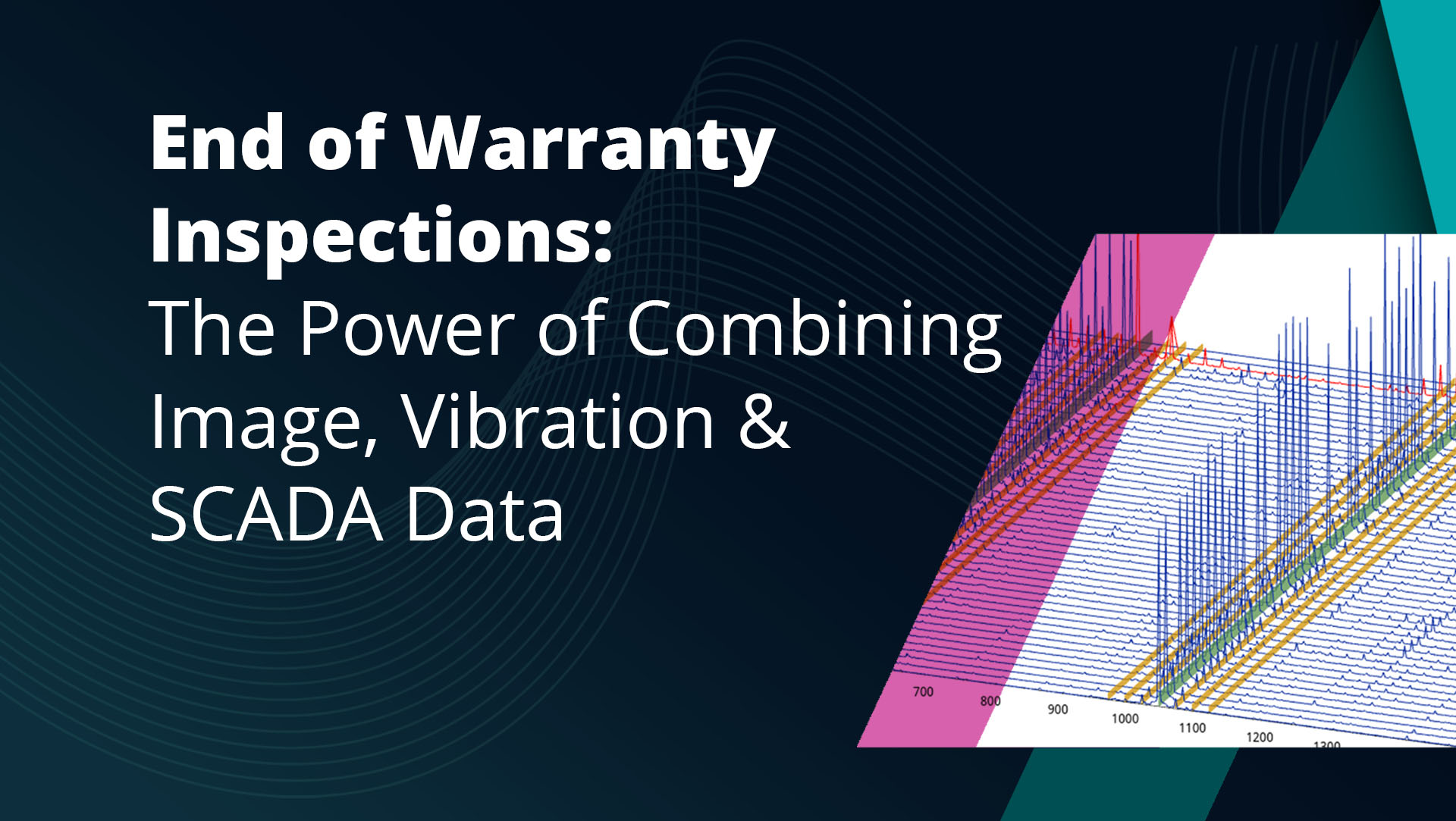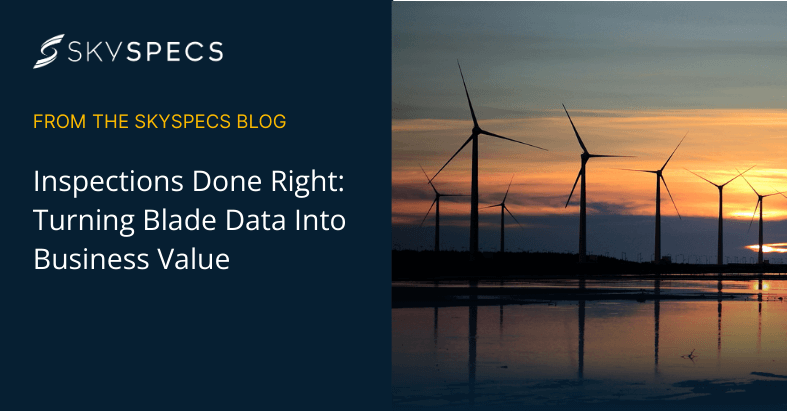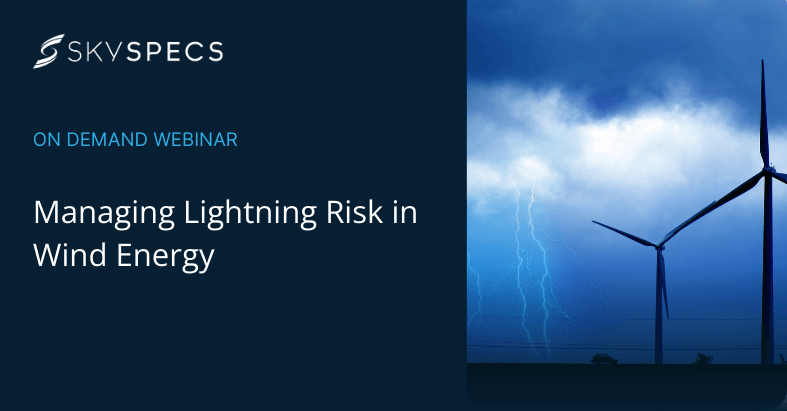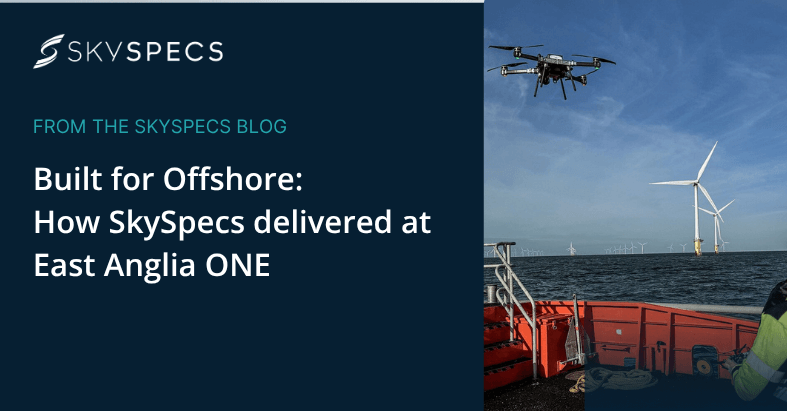As wind turbines in your fleet near the end of their original equipment manufacturer (OEM) warranties, it’s essential to ensure they’re in good working order and have no major damages that impact their efficiency and reliability. An end of warranty (EoW) inspection is one of the best investments your organization can make in your wind energy assets, and it can potentially save hundreds of thousands of dollars by catching damages before they propagate.
While drone inspections and other image-based reports can give you a snapshot of your turbine health, incorporating other factors, such as vibration and SCADA data, can help you conduct a more accurate and comprehensive EoW inspection. Combining sources of data will help your organization gain deeper insights into the health of your turbines and take proactive measures to maintain their performance and extend their lifespan.
If you’re not familiar with EoW best practices or merging image and vibration data for inspections, we’re here to help! In this post, we’ll break down the following:
- What an EoW inspection consists of
- How long an EoW inspection takes
- Why an EoW inspection is important
- Challenges associated with EoW inspections
- The benefits of combining vibration data and SCADA analysis with images for an EoW inspection
Do you have specific questions about EoW inspections for your organization? We’re here to help!
What is an end-of-warranty (EoW) inspection?
An end-of-warranty (EoW) inspection is a comprehensive review of your assets that will identify any damages or defects that need to be addressed before your warranty expires.
An EoW inspection can include taking detailed photos with a drone, taking oil samples, or using a borescope to look at the internal components of the gearbox. If you have compiled drivetrain vibration data or turbine SCADA data, that can also be analyzed to check for abnormalities. Then, once an inspection report has been created with the findings, the owner-operator can inform the OEM of any damages identified that need to be addressed.
How long does an EoW inspection take?
Timing of an EoW inspection is critical. You want to complete the inspections as close to the end of warranty date as possible to ensure you capture the most recent health status of the turbines before the warranty expires. However, coordinating all of the moving parts for EoW inspections can take months to pull together. When an owner-operator chooses to do an EoW inspection, plans should be in place at least 6 months before the warranty’s expiration, which is an average of 2-5 years. Contracting and conducting an EoW inspection isn’t always a quick process, especially if you’re planning to have technicians on-site for drone flights, borescopes, or tower walkdowns.
While some experienced technicians can perform EoW inspections on 2-3 turbines per day, the time needed quickly adds up if you have a large site. For a site of 100 turbines, the inspections themselves can take 20-30 days with multiple teams, and then the analytics personnel involved need time to process the data collected, create reports, and submit claims to the OEM. Anticipating your timelines and building in room for delays is critical.
Why an end-of-warranty inspection is important
Ordering an EoW inspection can potentially save your organization a ton of headaches in the long term. Let’s dive deeper into two significant factors that make your EoW inspections worth every penny.
Cost reduction
If damages or defects are identified before the expiration of the warranty period, then the OEM is typically obligated to carry out repairs and replacements at little or no cost to the owner-operator. However, if a component fails or otherwise breaks after the warranty has expired, then the owner-operator is responsible for all costs associated with repairing the part. The cost of fixing turbine parts is significant, and it can have a massive impact on your organization’s budget spend.
“If you’re an owner-operator without help on-site, you’re essentially blind to the condition of your assets and at the mercy of your OEM to point things out to you,” says John Ugland, account executive at SkySpecs. “EoW inspections can potentially give you one of the biggest ROIs in the industry because they give you a detailed snapshot of exactly what’s going on in your fleet and what repairs are needed.”
Conducting an EoW inspection makes it possible to take note of every damage that has developed during the warranty period, taking the financial responsibility off of your company. Without this inspection, you can potentially be throwing away hundreds of thousands of dollars in repairs that an OEM would have carried out if damages were identified during the warranty.
Reduced downtime caused by major failures
If you’re able to identify damages or issues with an EoW inspection, you can prevent a major failure of your equipment that otherwise would have resulted in a lot of downtime for repairs. As owner-operators prepare to take over the long-term risk of wind assets, it’s essential to know the state of the fleet before the warranty expires so they can be prepared for potential issues down the line. Preventing turbine downtime is essential to the profitability of the fleet.
Even if the EoW inspection doesn’t come back with any major concerns, it’s still great to have peace of mind that the wind farm has been operating well and should continue to do so after the warranty period is over.
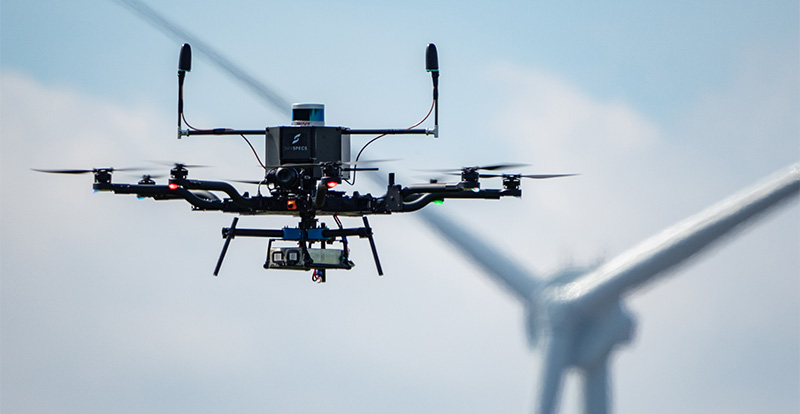
Challenges of EoW inspections
While EoW inspections are clearly beneficial to your organization, they aren’t without challenges. Two main obstacles your team needs to be prepared for are scheduling difficulties and OEM pushback on findings. Let’s break them down.
Scheduling difficulties
Scheduling your EoW inspection far enough in advance to allow technicians enough time to do a thorough job is a challenge in itself, but you also need to consider how the timing of the inspection could impact your profitability. You don’t want your turbines to be offline for inspection during peak wind season.
Check that your organization has plans to order an EoW inspection well in advance of the warranty expiration date, and begin lining up the necessary third parties and resources as soon as possible. While it is possible to perform an expedited inspection, you may not be able to complete all aspects of an ideal EoW checklist (such as not having time for a borescope), and your data won’t be as thorough.
Pushback from OEMs
After your EoW inspection report is complete and damages are identified, your organization needs to submit repair requests to the OEM before the warranty expires. Depending on the request and type of damage, the OEM may challenge your warranty claims. For example, they might state that a blade crack was the result of damage caused by transport and installation and instead push liability to the construction company that installed the turbine.
To prevent this type of pushback, it’s a best practice to conduct commercial operation date (COD) inspections at the beginning of your assets’ lifecycle. That way, you can bring that data to the OEM and show that the damages developed after construction and that they are liable for the repair costs.
Even if your organization didn’t order a COD inspection for your fleet, you can still use the data gathered from your EoW inspection to build a strong case for why the damages should be covered by the OEM warranty.
Benefits of combining vibration data and SCADA analysis with images for an EoW inspection
Having SCADA data as well as vibration data from your wind turbine condition monitoring system (CMS) is a highly beneficial piece of the puzzle when conducting EoW inspections. When you are armed with this data, you can request that the technicians pay special attention to the affected area, such as giving them a checklist of the components that could potentially be causing the issue. Without data, your technician isn’t looking for anything specific and may be more likely to miss a defect.
Additionally, if the technician finds nothing wrong but vibration or SCADA data indicates an issue, that calls for further investigation. Without this information, these issues could potentially be missed altogether, causing your team more difficulties in the long run.
Ideally, your team should already have a plan and a schedule for an EoW inspection well in advance. However, even if your warranty expiration date is rapidly approaching, it’s not too late. While you may not have the ability to schedule a borescope inspection or other on-site analysis for all your turbines, scheduling a one-off health check of your vibration data or SCADA analysis will expedite the process and make your team more efficient.
Furthermore, after the data analysis, your team can prioritize what needs to be inspected based on how high the chances are of being able to file a claim under warranty. If the chances are low, then your team may determine that it’s not worth your time or resources to order a full inspection.
Next steps with EoW inspections at your organization
An end-of-warranty inspection is an essential investment for your organization to make to ensure the success of your assets. It will give your team the information they need to either prepare to assume responsibility for the maintenance of the fleet or submit repair requests to the OEM before the warranty’s expiration.
After the OEM has made repairs or replacements, it’s a good idea to consider a follow-up inspection to ensure all is well and that the issues have been properly fixed. That way, you’ll have the peace of mind needed to confidently transition to the post-warranty period of your assets and be prepared for the next stages of your assets’ lifecycle.
Do you have specific questions about EoW inspections for your organization? We’re here to help.
